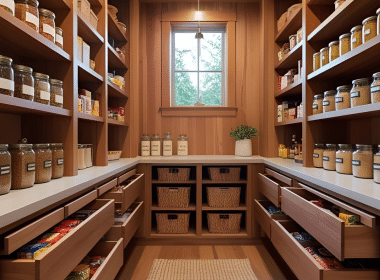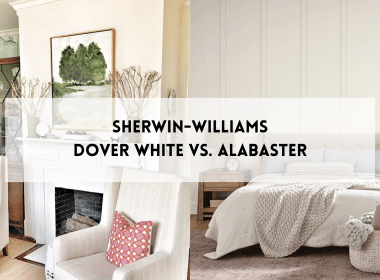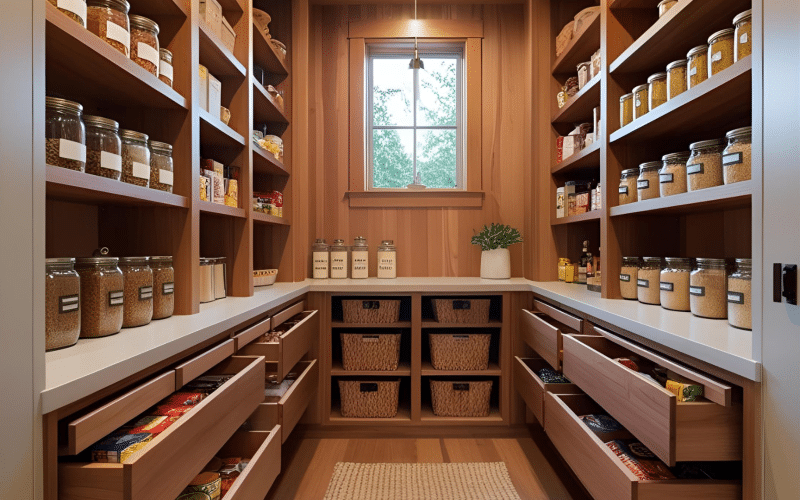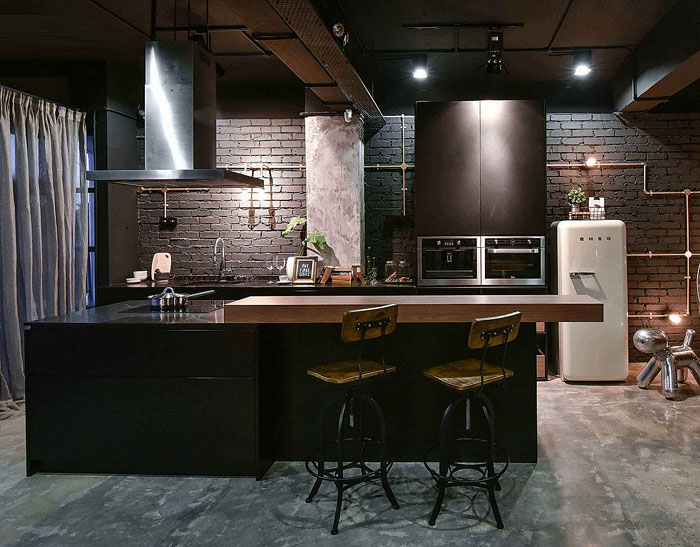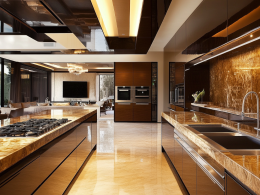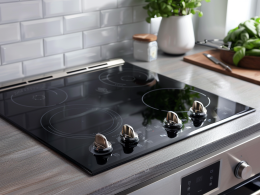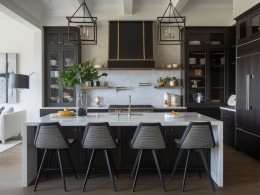A pantry is a crucial part of any kitchen, offering organized storage for essential food items and other kitchen necessities.
With various designs available, it’s important to select the one that fits your kitchen’s size, layout, and storage needs.
If you’re looking for a traditional integrated pantry or a spacious walk-in option, understanding the different types can help you make an informed decision.
In this blog, we will look at the most popular pantry designs, their features, and how they can improve your kitchen’s functionality.
Let us get started!
Types of Pantries
Pantries come in various styles, each offering unique storage solutions to suit different kitchen sizes and needs.
Whether integrated, standalone, or space-saving, they enhance kitchen organization and accessibility.
1. Traditional Pantry: Integrated into Kitchen Cabinetry

A traditional pantry is built to blend with your kitchen cabinetry.
These pantries can be part of your main kitchen units or stand alone as a feature piece.
You can choose from various door styles, colors, and decorative touches to match your kitchen design.
Inside, you’ll find a mix of shelves, drawers, and racks to meet your specific storage needs. This pantry style works well in kitchens where space is limited but storage is a priority.
2. Butler’s Pantry: A Separate Walk-in Space or Room

A butler’s pantry is a separate room or area that connects your kitchen to your dining space.
Historically, it was where butlers would prepare meals away from guests’ eyes.
Today, butler’s pantries offer extensive storage with floor-to-ceiling shelves, extra workspace, and sometimes room for large appliances like refrigerators.
They’re ideal for hiding meal prep messes during parties and storing special dishes or serving items that aren’t used daily.
This option requires more square footage but provides maximum storage capacity.
3. Walk-in Pantry: Storage Space You Can Walk into It

A walk-in pantry is exactly what it sounds like—a storage space large enough to step inside.
Though smaller than a butler’s pantry, walk-ins typically have shelving on three walls, making items easy to see and access.
They may be located within the kitchen or nearby.
Good lighting is essential in walk-in pantries so you can easily find what you need. This style works well for families who buy in bulk or have many small appliances to store.
4. Pantry Cabinet: Full-Height Cabinet with Storage Solutions

Pantry cabinets are tall, full-height cabinets with specialized storage features.
With single or double doors, they can create almost as much storage as a walk-in pantry while using much less floor space.
They can include adjustable shelves, pull-out drawers, and custom organizers to maximize their usefulness.
This option is perfect for kitchens where adding a separate room isn’t possible.
5. Freestanding Pantry: Movable Storage Option

A freestanding pantry is like a large cupboard that stands on its own.
It can be placed against any wall with available space and moved if needed—you can even take it with you when you move homes.
These pantries can match your kitchen style or create a contrast as a design feature.
They come with various storage options, including drawers, shelves, and pull-outs. This style is great for renters or those who want flexibility in their kitchen layout.
6. Wall Pantry: Uses Empty Wall Space

Wall pantries make use of empty wall areas when there’s not enough room for a full-size option.
Though smaller, they’re perfect for specific needs—like a spice rack near your cooking area or a cabinet for glasses and bottles.
These compact pantries make smart use of otherwise unused space and keep frequently used items within easy reach.
7. Slide-out Pantry: Space-saving option

Slide-out pantries are narrow cabinets that pull forward to reveal storage space inside.
They can fit in small gaps beside refrigerators or between cabinets, turning wasted inches into valuable storage.
These pantries can include adjustable shelves, baskets, and specialized holders for cans, bottles, and containers.
They’re an excellent solution for small kitchens or as additional storage in any kitchen layout.
Essential Features of a Pantry
A well-designed pantry is an essential part of any kitchen. It provides storage for dry goods, canned items, and other kitchen essentials.
It helps keep your kitchen organized, ensures easy access to food, and extends the shelf life of various ingredients.
A good pantry should be functional, adaptable, and easy to maintain. It should allow you to store everything efficiently while reducing clutter.
Focusing on organization, temperature control, and space optimization can help you make the most of your pantry space.
Organization: Shelving, Storage Bins, and Labeling Systems
Proper organization in a pantry ensures easy access to food items.
Shelving, storage bins, and labeling systems help group items by type, making it easier to find ingredients and manage inventory.
Adjustable shelving allows for customization based on item sizes, while clear bins or jars keep smaller items together and visible.
Labeling products can prevent confusion and improve meal planning efficiency, ensuring that everything has a designated spot.
Temperature Control: Ensuring the Pantry is Cool and Dry
Temperature control is key to maintaining food quality and extending shelf life.
A pantry should be kept cool (ideally between 50-70°F) and dry to prevent food spoilage or contamination.
Humidity can cause mold growth or softening of products, while excessive heat can lead to oil rancidity or loss of flavor in herbs and spices.
Proper ventilation is important as it helps maintain consistent temperatures, especially in warmer climates or during the summer months.
Space Optimization: Proper Use of Available Space
Space optimization ensures that every inch of your pantry is efficiently used.
For smaller kitchens, consider vertical shelving, pull-out drawers, and door-mounted racks to maximize storage without taking up floor space.
For larger pantries, you can incorporate deep shelves for bulk storage and rotating systems for easy access.
Keep often-used items at eye level and heavy items lower to avoid difficulty accessing them. Organizing your pantry efficiently will save you time and effort in finding and storing items.
Common Items Stored in a Pantry

A pantry is essential for storing a variety of items that are frequently used in everyday cooking and household needs.
- Non-perishable food items: Canned goods, pasta, rice, cereals, spices, oils, and condiments have a long shelf life.
- Snacks and dried goods: Snacks like chips, crackers, dried fruits, nuts, and seeds provide quick, healthy options.
- Baking ingredients: Flour, sugar, baking soda, yeast, and other essentials ensure you’re always ready for baking.
- Household items: Paper towels, cleaning products, and other non-food essentials keep the pantry organized and stocked.
Designing and Organizing a Pantry
Designing a pantry involves selecting an accessible location, choosing flexible shelving, and optimizing space.
Maximize vertical storage, use bins, and label for easy access to maintain a well-organized and functional pantry.
Choosing the Right Location
The location of your pantry plays a key role in your kitchen’s functionality.
Ideally, it should be close to your cooking and prep areas, making it easy to access ingredients while cooking.
If your kitchen space is limited, a pantry can be placed in a nearby hallway, closet, or even under the stairs.
It’s important to consider factors like convenience and accessibility when selecting the perfect spot for your pantry.
Shelving Solutions
Choosing the right shelving is essential for maximizing your pantry’s efficiency.
Adjustable shelves are great because they allow you to customize the height of each shelf, making it easy to store everything from tall cereal boxes to small cans.
Pull-out drawers are perfect for keeping small items organized and easily accessible, while baskets can help corral smaller items like snacks, spices, or baking items.
Hooks on the inside of pantry doors can also be used to hang bags, aprons, or even small kitchen tools. All these options provide flexibility and easy access to the items you use most.
Maximizing Space
Maximizing space in your pantry is crucial, especially if you have a smaller area.
Utilizing vertical space is one of the best ways to get more storage without taking up additional floor space.
Tall shelves or cabinets can accommodate larger items or bulk purchases.
Grouping similar items not only helps you find things faster but also keeps the pantry neat and organized.
Labels on bins, jars, and containers help identify the contents quickly, while clear bins or jars give you a visual reminder of stock levels.
To maximize shelf space, consider using stackable containers for items like pasta, rice, and cereals.
These simple yet effective design strategies will ensure your pantry is both functional and visually appealing.
Pantry Maintenance and Other Useful Tips
A well-maintained pantry is essential for keeping food fresh, organized, and easily accessible.
Regular checks, cleaning, and proper storage techniques can help you avoid waste and make your pantry more efficient.
Regularly Checking for Expired Items and Rotating Food
Regularly inspect pantry items for expiration dates. Use the “first in, first out” method to rotate food, ensuring older items are used before newer ones.
This reduces waste, helps maintain freshness, and keeps your pantry well-organized.
Keeping the Pantry Clean and Free from Pests
To prevent pests, keep pantry shelves clean and organized. Wipe down surfaces regularly and store dry goods in airtight containers.
Check for signs of infestation and use natural pest deterrents like bay leaves, cinnamon, or essential oils.
Organizing Pantry Contents
Group similar items together for easy access. Place commonly used products at eye level, and use baskets or bins for smaller items.
Keep an inventory list to track food levels and avoid purchasing duplicates, helping you save time and money.
Common Pantry Mistakes to Avoid
- Overcrowding makes it hard to find items. Regularly declutter and donate expired goods.
- Opaque containers hide contents. Use clear, airtight containers for easy access.
- No labels confuse—label containers with contents and expiration dates.
- Ignoring expiration dates leads to waste. Rotate items using the “first in, first out” method.
- Wasting vertical space reduces storage. Use adjustable shelves and stackable containers.
- Poor lighting and ventilation cause issues. Add lighting and ensure proper airflow.
Conclusion
A well-designed pantry is essential for improving kitchen organization, improving accessibility, and maximizing storage efficiency.
If you choose a traditional integrated pantry, a spacious walk-in, or a versatile freestanding unit, each type offers unique benefits to suit your kitchen space and lifestyle.
Proper organization, temperature control, and space optimization ensure that your pantry functions effectively while keeping your kitchen clutter-free.
By maintaining a clean and well-organized pantry, you can reduce food waste, save time, and create a more efficient cooking environment.
Finally, a thoughtfully designed pantry can significantly improve your overall kitchen experience.

